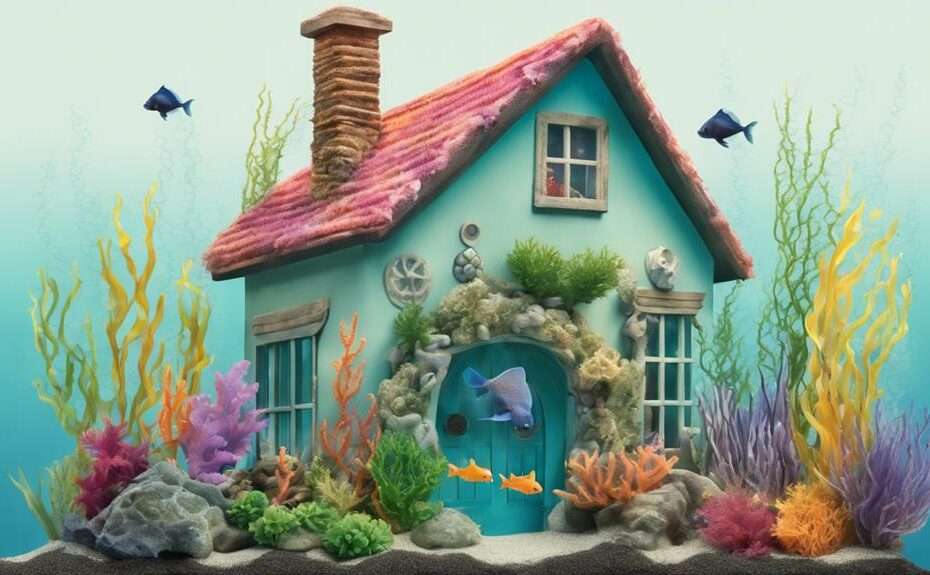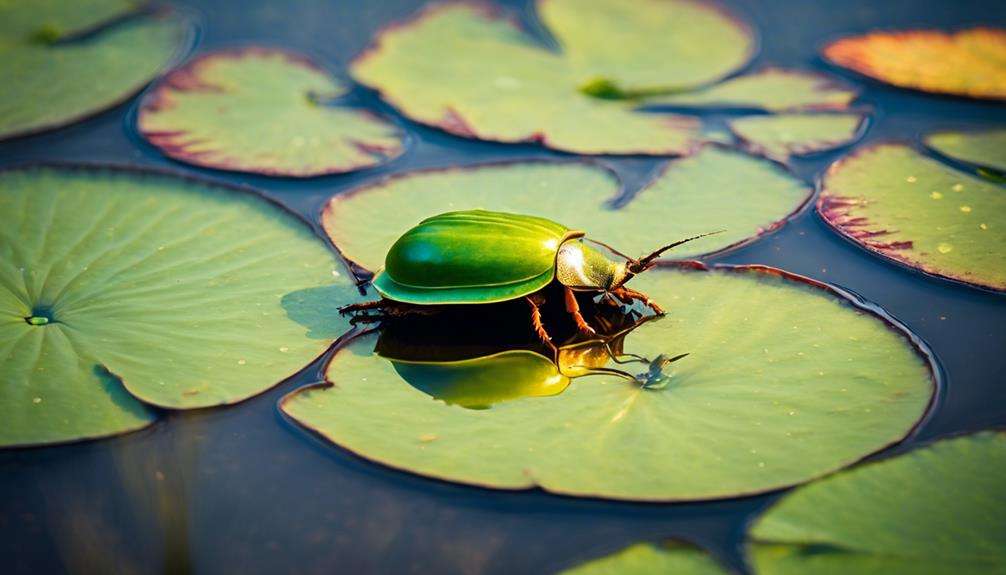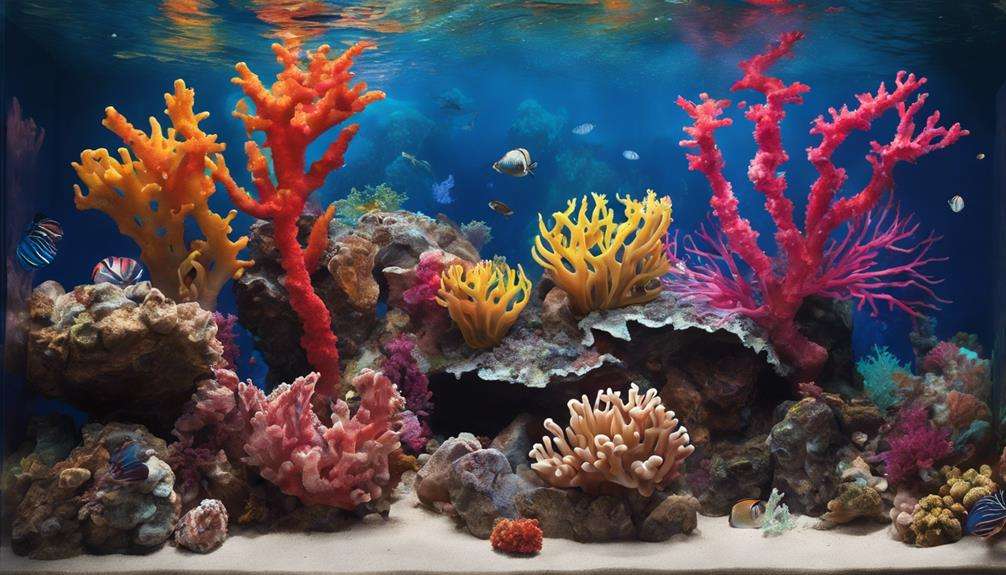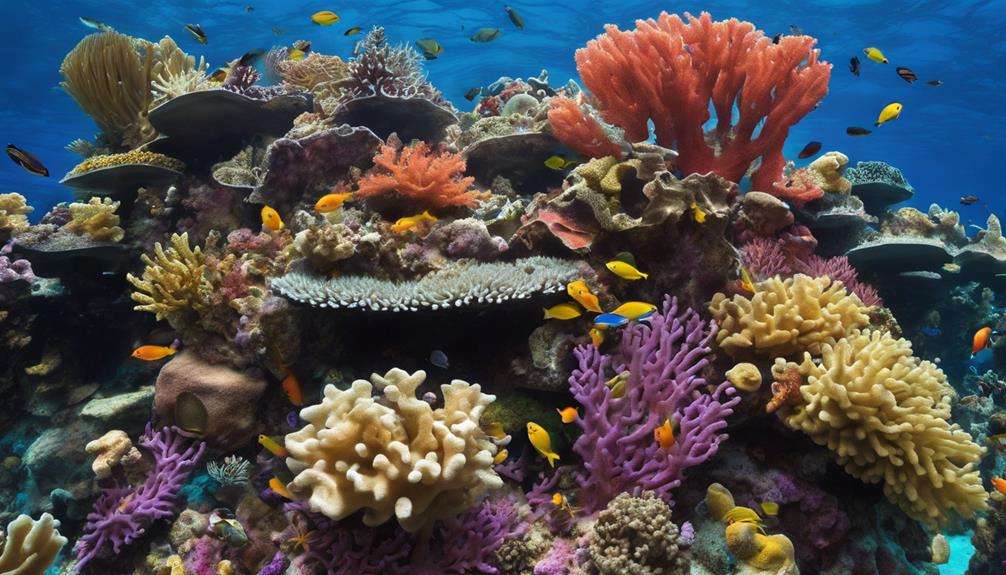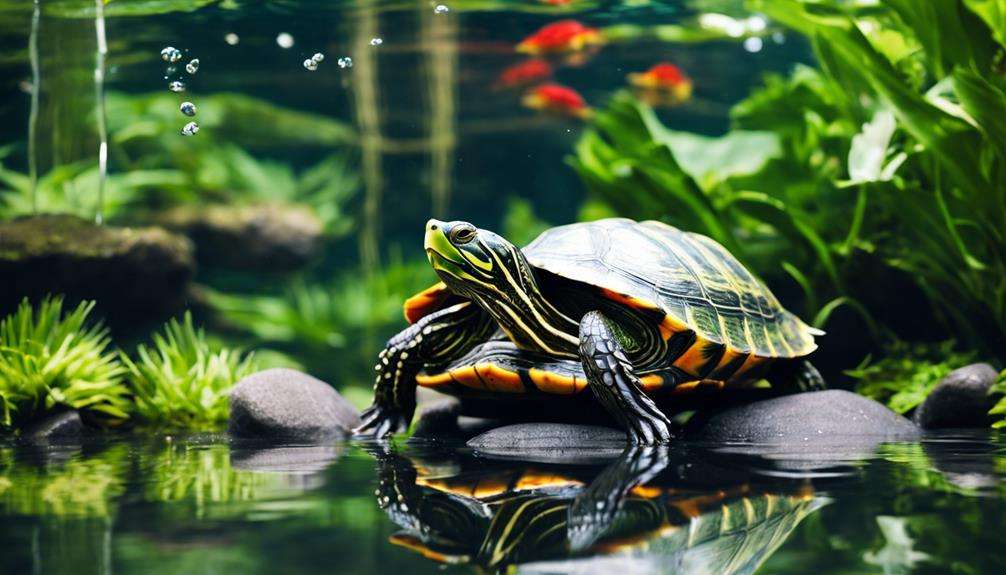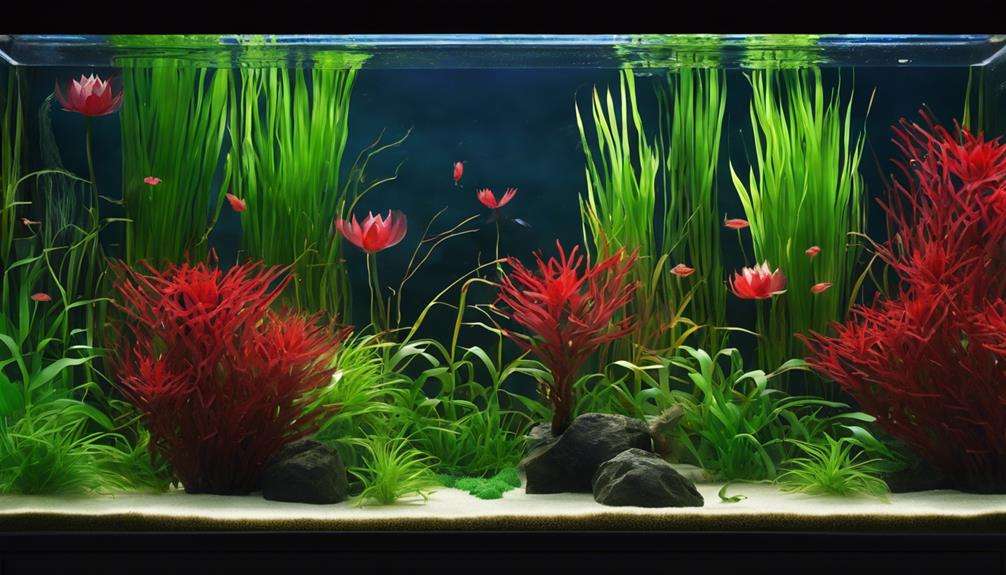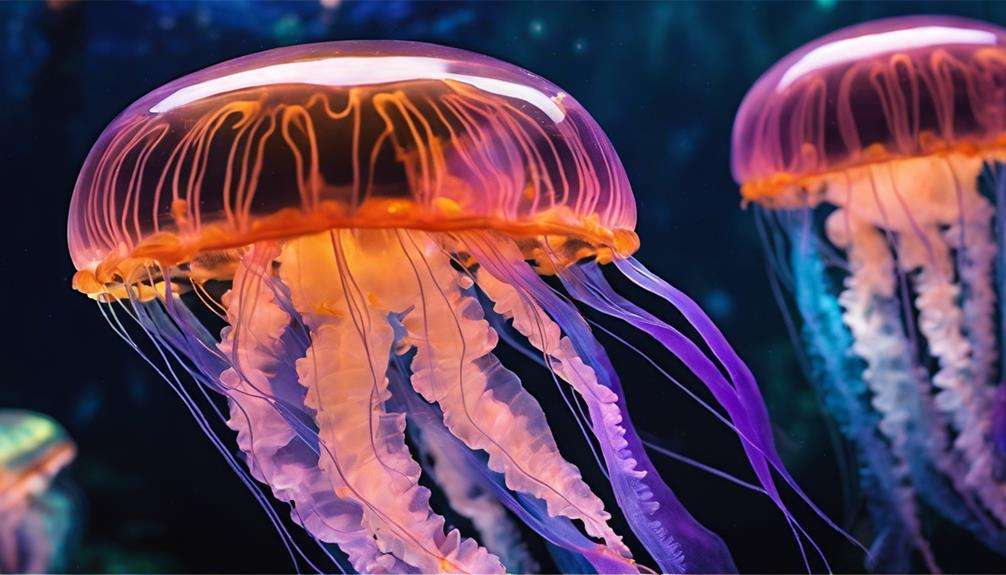Imagine transforming your home aquarium into a peaceful sanctuary reminiscent of the ocean depths, where seahorses gracefully glide through the water. To guarantee the well-being of these unique creatures, attention to detail is pivotal. From creating a suitable environment that mirrors their natural habitat to understanding their specific dietary needs, each aspect plays a critical role in their care.
But what about the fascinating aspects of seahorse behavior that can enhance your aquarium experience? Let's explore how these enchanting creatures can captivate and inspire you in ways you never imagined.
Key Takeaways
- Provide suitable tank setup and maintenance for seahorses.
- Monitor seahorse health daily for signs of stress or illness.
- Create a conducive breeding environment with stable water parameters.
- Seek veterinary assistance for persistent health issues in seahorses.
Tank Setup for Seahorses
When setting up a tank for seahorses in your home aquarium, consider the specific requirements of the species to guarantee their well-being and comfort.
Start by choosing an appropriately sized tank based on the species you intend to keep. Tropical seahorses typically require a minimum of a 29-gallon tank, while dwarf seahorses can thrive in smaller setups.
Make sure the tank provides ample vertical space as seahorses are known to climb and seek refuge in higher areas. Incorporating live rock in the tank is essential as it allows seahorses to perch and hide, mimicking their natural habitat where they often cling to underwater structures.
Additionally, installing gentle filtration systems is recommended to prevent strong currents that could stress these delicate creatures.
Cleaning and Maintenance Tips
Monitor your tank temperature daily to make sure it stays ideal for seahorses.
Conduct weekly water quality checks to keep the environment healthy.
Top off water levels as needed to maintain stable salinity levels.
Tank Water Quality
Maintain high-quality tank water quality in your home aquarium by conducting weekly water quality checks and performing regular partial water changes to guarantee a healthy environment for your seahorses. Monitor the temperature daily to make sure it remains within the recommended range for seahorses.
Check water quality parameters weekly to uphold ideal conditions. Every 2-4 weeks, engage in partial water changes to eliminate waste buildup and replenish essential minerals. Avoid large water changes to preserve beneficial bacteria important for a healthy tank.
Keep water levels consistent by topping off to counter evaporation and maintain stable salinity levels for your seahorses' well-being. By adhering to these practices, you can create a thriving aquatic habitat for your seahorse tank.
Equipment Upkeep
To guarantee the longevity of your seahorse tank and the health of its inhabitants, proper cleaning and maintenance of your aquarium equipment is imperative.
Regularly clean filter socks to prevent debris buildup that can affect water quality. Make sure the filter is correctly sized for your seahorse tank to maintain peak filtration efficiency.
Perform routine checks on equipment like pumps and heaters to make sure they're functioning correctly. Clean the protein skimmer regularly to remove excess organic compounds.
Check the aquarium's return lines for any blockages that could disrupt water flow. By maintaining and cleaning your equipment consistently, you can create a healthy and stable environment for your seahorses to thrive in.
Choosing Seahorse-Friendly Decor
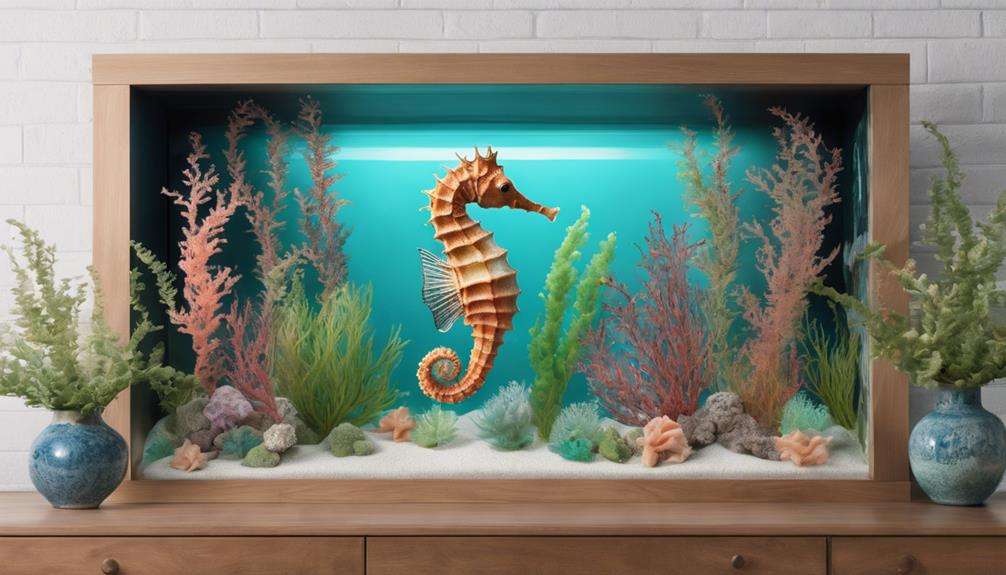
When setting up your seahorse tank, prioritize selecting decor that provides ample hitching posts and holdfasts for the seahorses' resting and security needs. Opt for tank decor such as artificial plants, soft corals, or plastic chains, which are important options for seahorses. These decorations offer suitable surfaces for seahorses to grasp and anchor themselves.
It's essential to avoid sharp or abrasive decorations that could potentially harm the delicate skin of seahorses. Additionally, consider the lighting in the tank, as seahorses may feel stressed in bright or intense lighting conditions. Providing dimly lit areas can help create a more comfortable environment for your seahorses.
When deciding on live corals for your seahorse tank, carefully assess their compatibility and potential risks. Ensuring the safety of your seahorses should be a top priority when selecting suitable tank decor.
Selecting Suitable Tankmates
When selecting suitable tankmates for your seahorses, avoid aggressive or fast-moving species that may compete for food. Opt for peaceful companions like gobies, small blennies, and certain damselfish.
Make sure that the tankmates don't nip at or disturb the delicate and slow-moving seahorses.
Seahorse Tank Compatibility
When considering suitable tankmates for seahorses, prioritize peaceful and slow-moving fish species like gobies, blennies, and other non-aggressive companions. These tank mates are compatible with seahorses because they won't outcompete them for food or cause stress with their fast movements.
Avoid fast-swimming or aggressive fish that may harass seahorses. In addition to fish, invertebrates such as snails, hermit crabs, and cleaner shrimp can also make good tank mates for seahorses.
It's pivotal to research and carefully select tank mates to establish a peaceful and harmonious environment for your seahorses. Create a habitat where all inhabitants can coexist without disturbing each other during feeding times or causing unnecessary stress with sudden movements.
Peaceful Tank Companions
For a harmonious and stress-free aquarium environment for your seahorses, carefully selecting peaceful tank companions such as small snails and shrimp is important. Peppermint shrimp, known for their critical nature, can make excellent tank mates for seahorses. These invertebrates not only add to the diversity of your tank but also help keep it clean by consuming detritus and algae.
When introducing new tank mates, it's essential to quarantine them first to prevent the spread of diseases or parasites that could harm your delicate seahorses. By choosing compatible and peaceful companions, you can create a balanced ecosystem where all inhabitants thrive without causing stress or competition for resources.
Avoid Aggressive Tankmates
To guarantee the well-being of your seahorses, it's essential to carefully select suitable tankmates and avoid aggressive species that could potentially harm these delicate creatures. Aggressive tankmates such as triggerfish, puffers, large angels, sharks, aggressive wrasses, eels, and stinging fish should be avoided in your seahorse tank.
It's critical to quarantine new fish before introducing them to the main tank to prevent disease outbreaks that could endanger seahorses. Opt for peaceful companions like small snails and shrimps such as peppermint shrimp to maintain a harmonious environment for your seahorses. Avoid larger crabs that may pose a threat to seahorses due to their potential to cause injuries.
Careful consideration of tank mate compatibility is important to ensure the safety and well-being of your delicate seahorses.
Ideal Diet for Pet Seahorses
Considering the dietary needs of pet seahorses, providing them with frozen Mysis shrimp as a staple food source is highly recommended due to its rich nutritional content and ease of feeding. Frozen Mysis shrimp closely mimics the seahorses' natural diet, making sure they receive essential nutrients like proteins, fatty acids, and vitamins necessary for their health and well-being. Thawing the frozen Mysis shrimp before feeding is essential to enable proper digestion and prevent potential health issues for seahorses.
Seahorses have specific feeding behaviors, preferring to eat small, frequent meals throughout the day. This feeding pattern helps meet their dietary requirements and supports their metabolism. Alongside the staple diet of frozen Mysis shrimp, including occasional treats like brine shrimp can add variety and enrichment to their feeding routine. Offering food in different ways, such as free feeding, using a feeding station, or hand feeding, allows you to monitor their eating habits closely and make sure they're receiving adequate nutrition for the best health.
Monitoring Seahorse Health
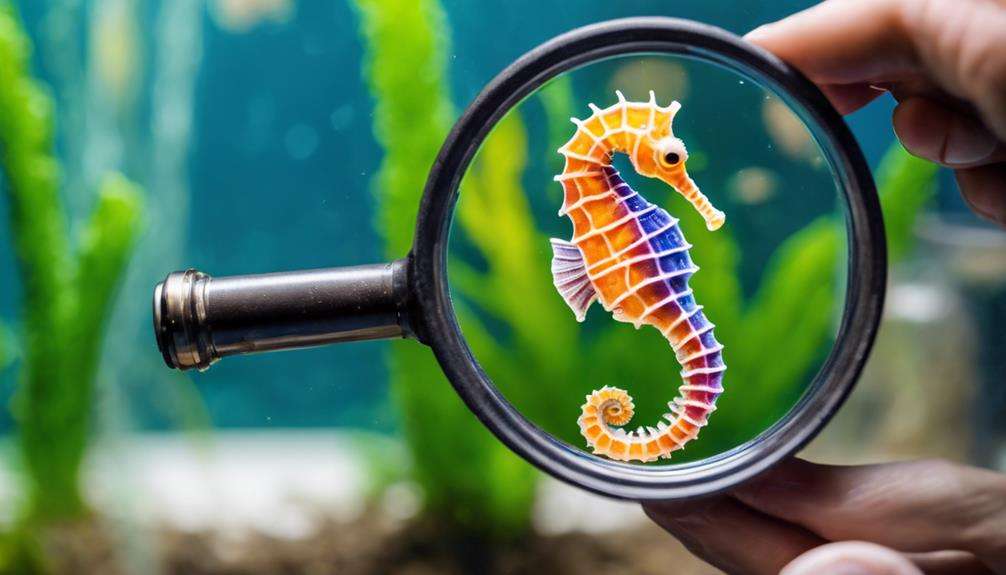
After ensuring your pet seahorses' ideal diet with frozen Mysis shrimp, it's paramount to vigilantly monitor their health by observing their behavior, appetite, and swimming patterns daily. Monitoring seahorse health involves watching for signs of stress such as color changes, rapid breathing, or excessive hiding. Additionally, look out for physical abnormalities like lesions, growths, or unusual markings on your seahorses.
Regularly conducting water quality tests is critical to provide ideal conditions for seahorse health. Changes in water parameters can directly impact seahorse well-being. If you notice persistent health issues or any concerns with your seahorses, seeking veterinary assistance is recommended.
Ensuring Proper Water Parameters
Maintain the water temperature between 75-80 F to guarantee a comfortable environment for your seahorses. Seahorses need stable water parameters to thrive in captivity. Make sure that the salinity levels in your tank are kept at 28-32 parts per thousand (ppt) for best health and well-being. Monitor the pH levels regularly to make certain they remain within the recommended range, typically around 8.1-8.4. Additionally, it's important to check and maintain the levels of ammonia, nitrate, and nitrite in the water to prevent any water quality issues that could harm your seahorses.
To maintain a healthy tank environment, conduct partial water changes every 2-4 weeks. These water changes help remove accumulated waste and replenish essential nutrients in the water. By following these guidelines and keeping a close eye on your seahorse's water parameters, you can create a suitable habitat that promotes their well-being and longevity in your home aquarium.
Seahorse Breeding Guidelines
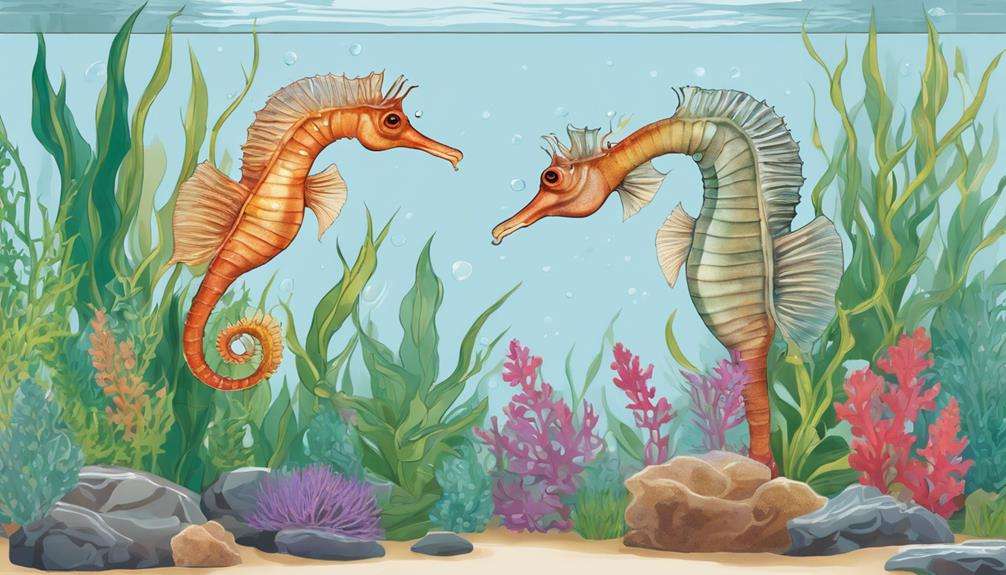
To successfully breed seahorses, it's essential to establish a species-specific tank setup with precise environmental conditions conducive to their reproductive behaviors. Seahorses, known for their unique breeding habits, require careful attention to detail when attempting to breed in captivity.
Proper tank maintenance is important for seahorse breeding success. Guarantee stable water parameters, including temperature, pH levels, and salinity, as fluctuations can stress seahorses and hinder breeding. Providing a stress-free environment is key to encouraging the intricate courtship dance where the female transfers eggs to the male's brood pouch.
Male seahorses play a crucial role in carrying and nurturing the fertilized eggs until they hatch, a process that may take several weeks. Monitoring water quality closely during this period is important to guarantee successful hatching and the survival of seahorse fry.
Maintaining a varied diet for adult seahorses is also important for successful breeding outcomes. By adhering to seahorse breeding guidelines and guaranteeing proper tank maintenance, you can increase the likelihood of successful seahorse breeding in your home aquarium.
Frequently Asked Questions
How Do You Take Care of a Seahorse at Home?
To care for a seahorse at home, feed them frozen Mysis shrimp and occasional brine shrimp treats. Consider breeding through courtship behavior. Decorate the tank with items for them to grasp. Maintain stable environment conditions for their well-being.
Are Seahorses Hard to Keep in an Aquarium?
Maintaining seahorses in an aquarium demands meticulous care due to their sensitivity to water conditions, feeding complexities, and breeding challenges. Seahorse behavior, feeding habits, and reproductive strategies require specialized attention for successful long-term aquarium keeping.
What Do Seahorses Need in Their Tank?
To cater to seahorses' needs in their tank, make sure you provide a suitable diet rich in small live foods, incorporate gentle tank decorations like artificial corals, and maintain water parameters within the best range for salinity, temperature, and lighting.
What Is the Best Tank Setup for Seahorses?
When setting up a tank for seahorses, guarantee decor mimics their natural habitat. Maintain pristine water quality with stable salinity and temperature levels. Establish a consistent feeding schedule to support their unique needs for a thriving aquatic environment.
Conclusion
Now that you have all the necessary information to care for seahorses in your home aquarium, remember to create a tranquil underwater paradise for these magnificent creatures.
Just like a skilled marine biologist, maintain perfect water conditions, provide a diverse diet, and keep a close eye on their health.
With proper care and attention, your seahorses will thrive and bring a touch of the ocean into your living space.
Immerse into the world of seahorse keeping and enjoy the beauty they bring!
